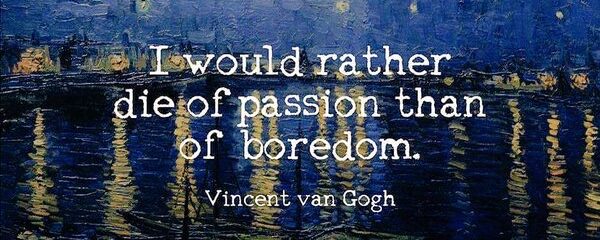
Better an apple pie than apple blossom
It’s better to drink and feel sick than not to drink and feel bad
Even the grave of the Lord has a paid guard
Common grief is lighter to bear
Montenegro is a country in southeast Europe on the Adriatic coast of the Balkans. It borders Bosnia and Herzegovina to the north, Serbia to the northeast, Kosovo to the east, Albania to the southeast, the Adriatic Sea and Croatia to the west. The largest and capital city Podgorica covers 10.4% of Montenegro’s territory and is home to 29.9% of the country’s population, while Cetinje has the status of old royal capital. Major group in the country are Montenegrins. Serbs form a significant minority at 28.7%, followed by Bosniaks, Albanians and Croats. During the Early Medieval period, three principalities were located on the territory of modern-day Montenegro: Duklja, roughly corresponding to the southern half; Travunia, the west; and Rascia proper, the north. The Principality of Zeta emerged in the 14th and 15th centuries. The name Montenegro was first used to refer to the country in the late 15th century. After falling under Ottoman rule, Montenegro regained its independence in 1696 under the rule of the House of Petrović-Njegoš, first as a theocracy and later as a secular principality. Montenegro’s independence was recognized by the Great Powers at the Congress of Berlin in 1878. In 1910, the country became a kingdom. After World War I, it became part of Yugoslavia. Following the breakup of Yugoslavia, the republics of Serbia and Montenegro together proclaimed a federation. Following the independence referendum held in May 2006, Montenegro declared its independence and the confederation peacefully dissolved.
Budva
Budva is a Montenegrin town on the Adriatic Sea. Budva is 2,500 years old, which makes it one of the oldest settlements on the Adriatic coast.
Cetinje
Cetinje is a city in Montenegro. It is the former royal capital (prijestonica / приjестоница) of Montenegro and is the location of several national institutions, including the official residence of the president of Montenegro. The city rests on a small karst plain surrounded by limestone mountains, including Mount Lovćen, the legendary mountain in Montenegrin historiography. Cetinje was founded in the 15th century and became a cradle of the culture of Montenegro and a Serbian Orthodox religious center. Its status as the honorary capital of Montenegro is due to its heritage as a long-serving former capital of Montenegro.
Kotor
Kotor is a coastal town in Montenegro. It is located in a secluded part of the Gulf of Kotor. The old Mediterranean port of Kotor is surrounded by fortifications built during the Venetian period. It is located on the Bay of Kotor (Boka Kotorska), one of the most indented parts of the Adriatic Sea. Some have called it the southernmost fjord in Europe, but it is a ria, a submerged river canyon. Together with the nearly overhanging limestone cliffs of Orjen and Lovćen, Kotor and its surrounding area form an impressive landscape.
Ostrog Monastery
The Monastery of Ostrog is a monastery of the Serbian Orthodox Church situated against an almost vertical background, high up in the large rock of Ostroška Greda, in Montenegro. It is dedicated to Saint Basil of Ostrog (Sveti Vasilije Ostroški), who was buried here. From the monastery, the Bjelopavlići plain can be seen.
Petrovi’c Njegos
The Mausoleum of Njegoš is a mausoleum interring Petar II Petrović-Njegoš located on the top of Mount Lovćen. It was built on the same location of the Njegoš Testament Church which Njegoš had built in 1845 with the intention of being buried there and which he dedicated to his predecessor Petar I Petrović-Njegoš (who is canonized as Saint Peter of Cetinje in the Serbian Orthodox Church). The church suffered damage from bombardment in both World Wars. In 1974, despite protest from the Metropolitanate of Montenegro and the Littoral and local Orthodox Christians, the old church was ordered demolished by a commission of the League of Communists of Montenegro led by Veljko Milatović and today’s mausoleum was built.
Podgorica
Podgorica pǒdɡoritsa- little area below the mountain is the capital and largest city of Montenegro. The city was known as Titograd between 1946 and 1992—in the period that Montenegro formed, as the Socialist Republic of Montenegro, part of the Socialist Federal Republic of Yugoslavia (SFRY)—in honour of Marshal Josip Broz Tito. Podgorica’s favourable position at the confluence of the Ribnica and Morača rivers and at the meeting-point of the fertile Zeta Plain and Bjelopavlići Valley has encouraged settlement. The city is close to winter skiing centers in the north and to seaside resorts on the Adriatic Sea.
Sveti Stefan
Sveti Stefan is a small islet and 5-star hotel resort on the Adriatic coast of Montenegro. The resort is known commercially as Aman Sveti Stefan and includes part of the mainland, where the Villa Miločer. The hotel is now a 5-star franchise of the international group of Aman Resorts, completed in 2009 and operating under a 30-year lease. Sveti Stefan was an island but is now connected to the mainland by a narrow tombolo. The resort in total contains 50 rooms, cottages, and suites on the island, and 8 grand suites at the Villa Miločer.







































































